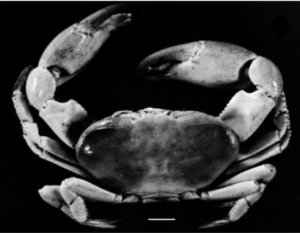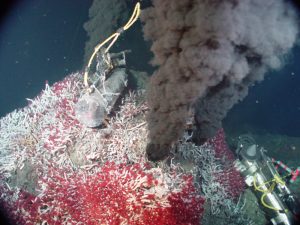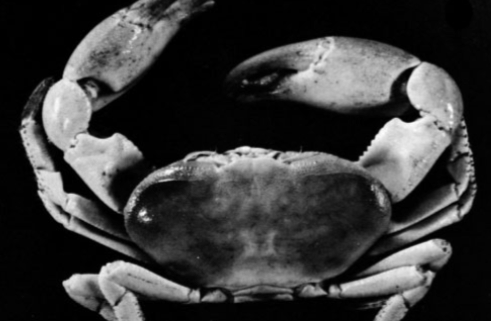Family Bythograeidae: Highly Specialized Crabs
By Rachael Ragen, SRC intern
The Family Bythograeidae are marine crabs that live near thermal vents. Most of them are colorless, but some may be yellow in color. The eggs and megalopa, which is a post-larva stage of the crab, tend to be orange or red. This coloration is likely due to carotenoids produced by hydrothermal vent bacteria, on which the crabs may be preying. Bythograeidae crabs are influenced by their environment including gametogenesis, which is part of the reproduction process for crabs. As different biological factors in their surroundings fluctuate, the size of oocyst and the rate of gametogenisis also changes. Their climate is therefore incredibly important to their survival.

Bythograeidae crab [Leignel, V., L. A. Hurtado, and M. Segonzac. “Ecology, adaptation, and acclimatisation mechanisms of Bythograeidae Williams, 1980, a unique endemic hydrothermal vent crabs family: current state of knowledge.” Marine and Freshwater Research, 2018, 69, 1-15.]

hydrothermal vent [http://www.photolib.noaa.gov/htmls/expl2218.htm]
Works Cited:
Leignel, V., L. A. Hurtado, and M. Segonzac. “Ecology, adaptation, and acclimatisation mechanisms of Bythograeidae Williams, 1980, a unique endemic hydrothermal vent crabs family: current state of knowledge.” Marine and Freshwater Research, 2018, 69, 1-15.




Interesting report on very unique crabs!